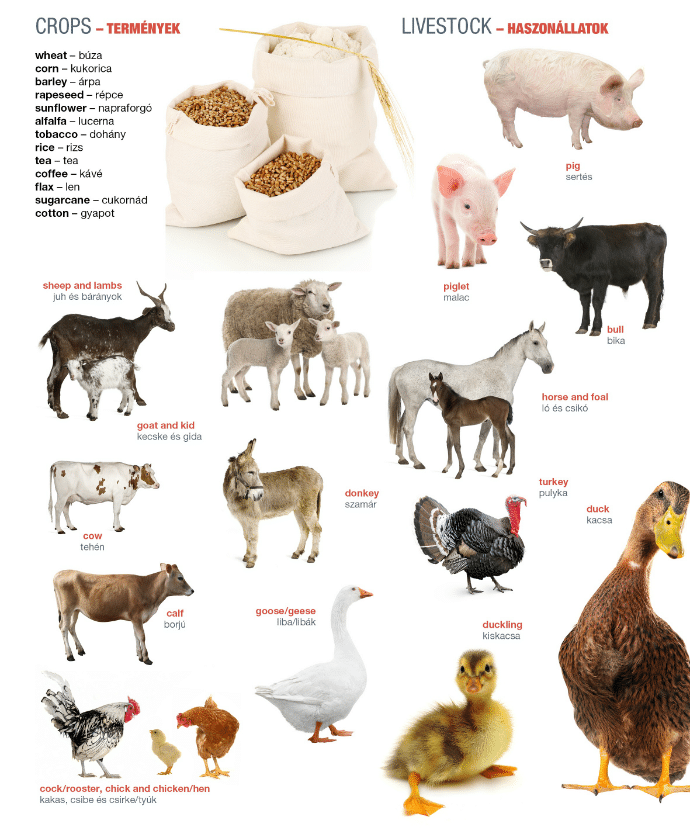Letölthető tartalmak
FARMING IN HUNGARY
The major part ofHungary’s land is arable as the climate is suitable for agriculture; approximately one-tenth of the country’s land is under permanent cultivation. Nowadays, privately owned farms produce much of the country’s fruit and vegetables. Livestock in Hungary mainly includes chickens, pigs, cattle, geese and sheep. As far as the crops are concerned, the most important are cereal grains, like wheat, corn and rye, but the country also produces potatoes, sunflower seed and sugar beet.
The Hungarian breeds of domestic animals are often seen as national symbols in Hungary. Local national parks serve as "gene banks" to ensure their survival. The most important Hungarian breeds of domestic animals are:
– Long-horn Hungarian Grey Cattle – Hungarian breed, traditionally kept in the open full year.
– Hungarian thoroughbred horses – a mid-19th century mixture of the best Arab and English race horse characteristics.
– Lipizzan – the mostly white breed of heavy cavalry horses, originated from Slovenia and successfully bred in Hungary.
– Mangalitsa – a breed of pigs, characterised by their long curly hair and relatively fatty meat which makes them ideal for making sausages and salami.
– Racka – a breed of sheep with distinctive horns.

the major part of – a nagy része valaminek
arable – művelhető, szántott
climate– klíma, éghajlat
to be suitable for – alkalmas valamire
approximately– nagyjából
permanent – állandó
cultivation – megművelés
nowadays – napjainkban, manapság
as far as … is/are concerned– ami a …-t illeti
breed – fajta
gene – gén
to ensure – biztosít
survival – túlélés
traditionally – hagyományosan
thoroughbred – telivér
to originate from – valahonnan ered
to be characterised by – valami jellemzi
distinctive – megkülönböztető



